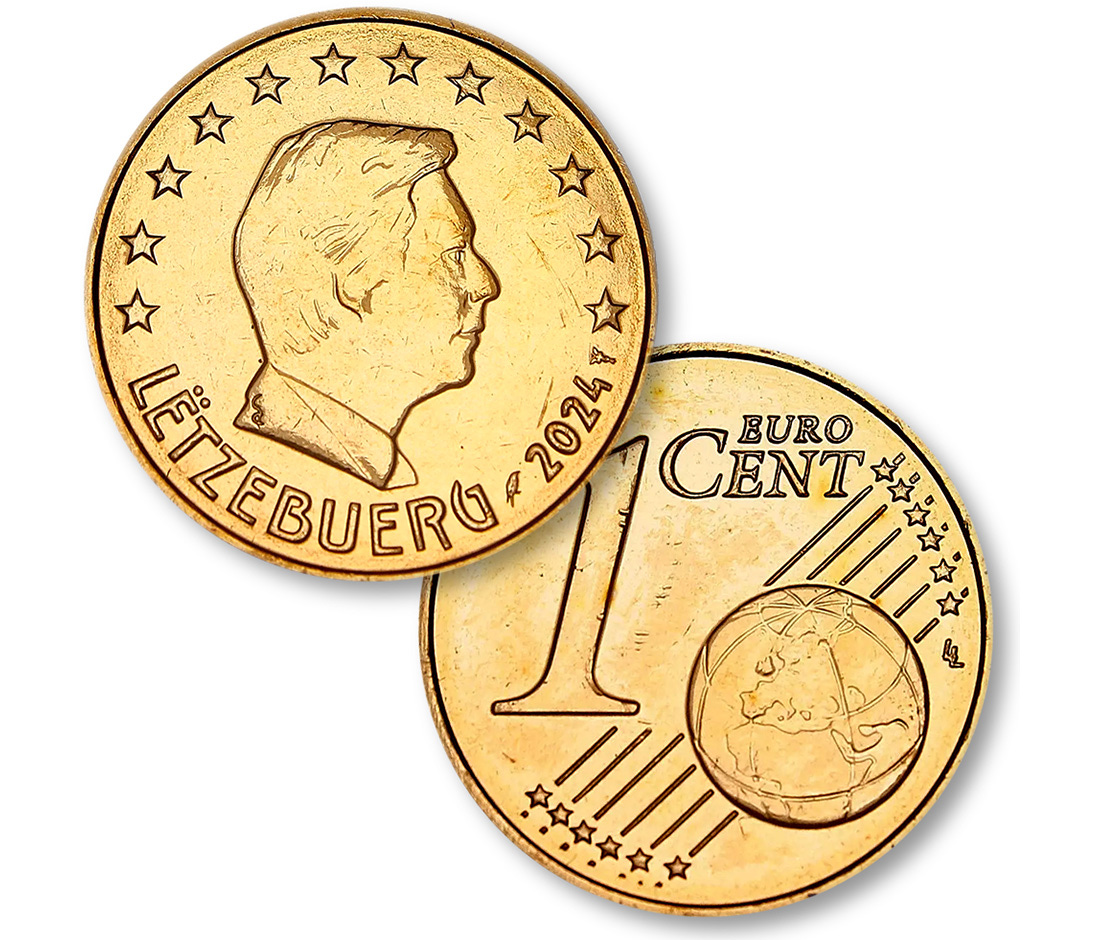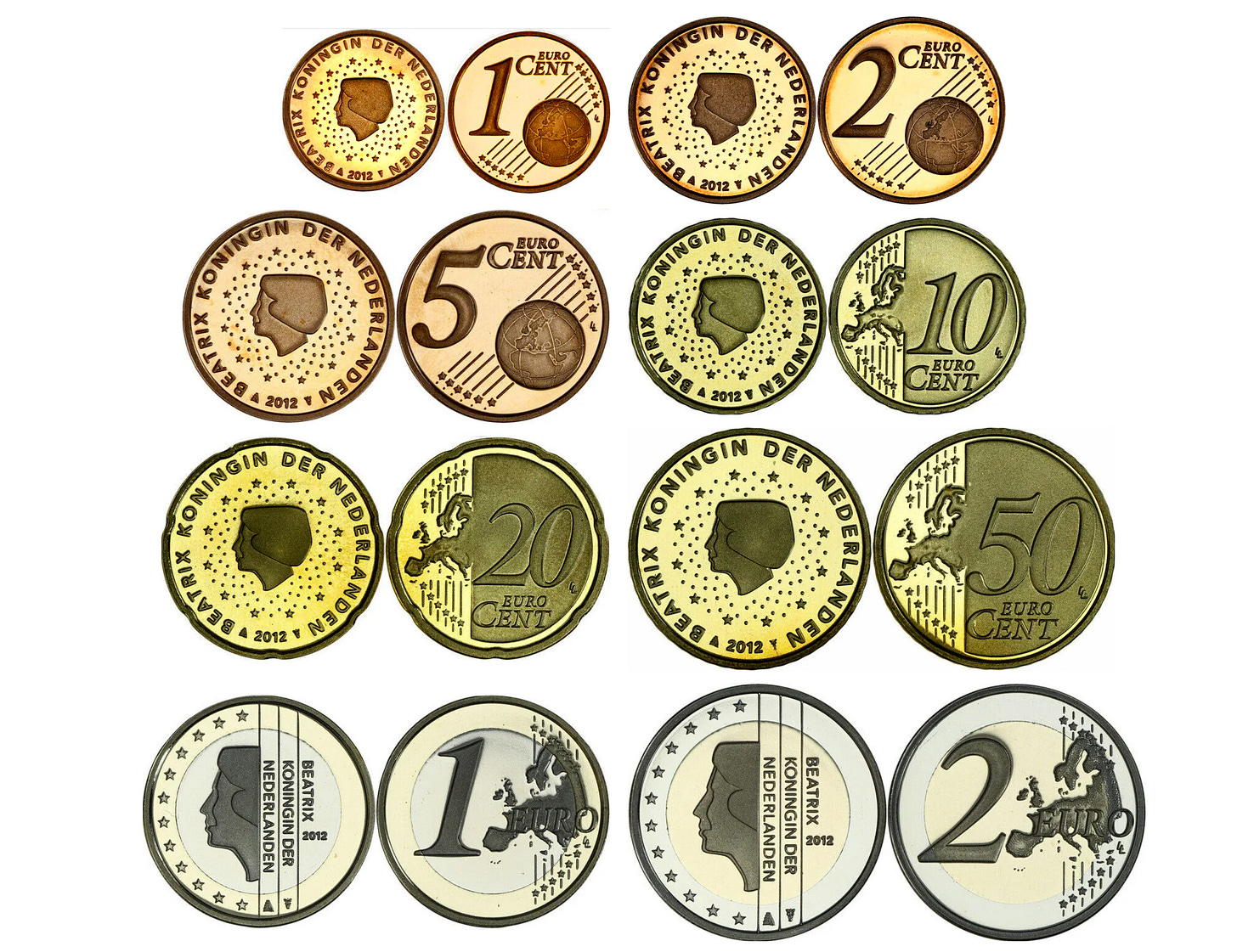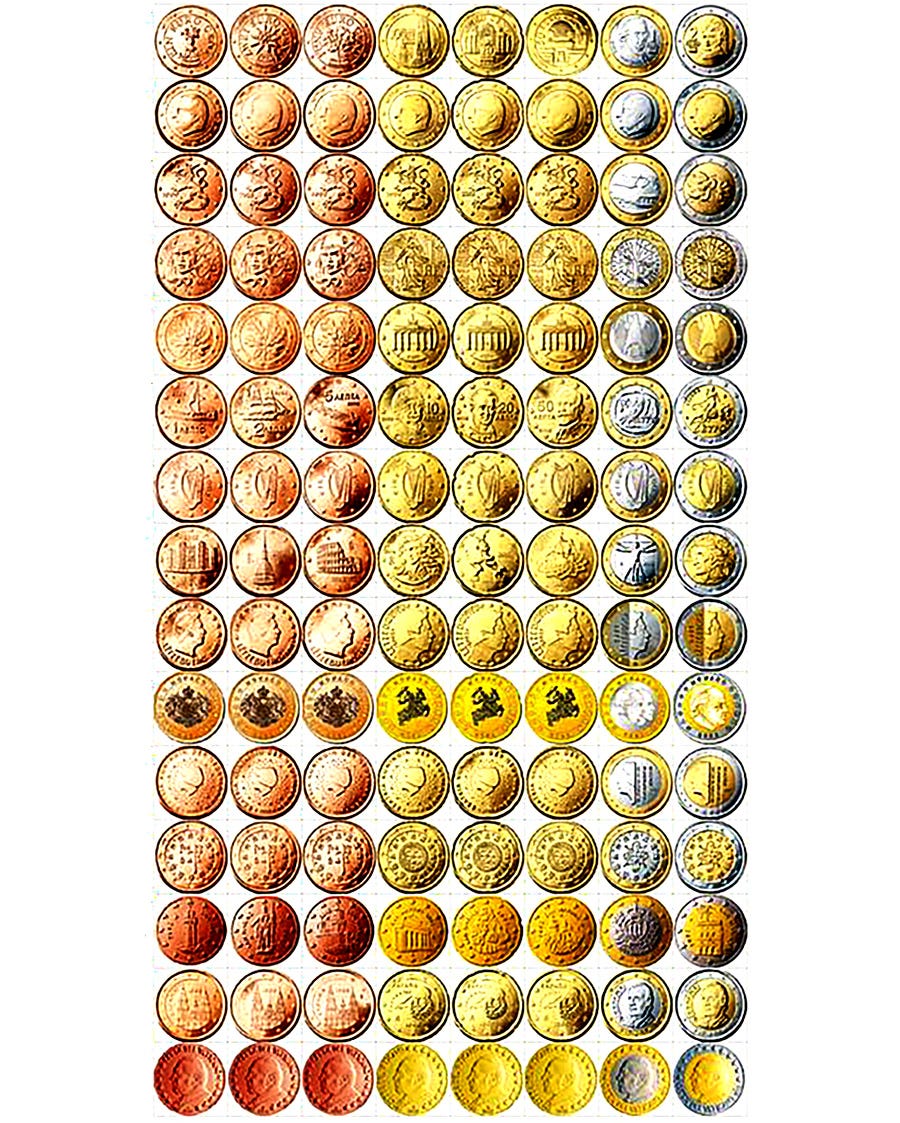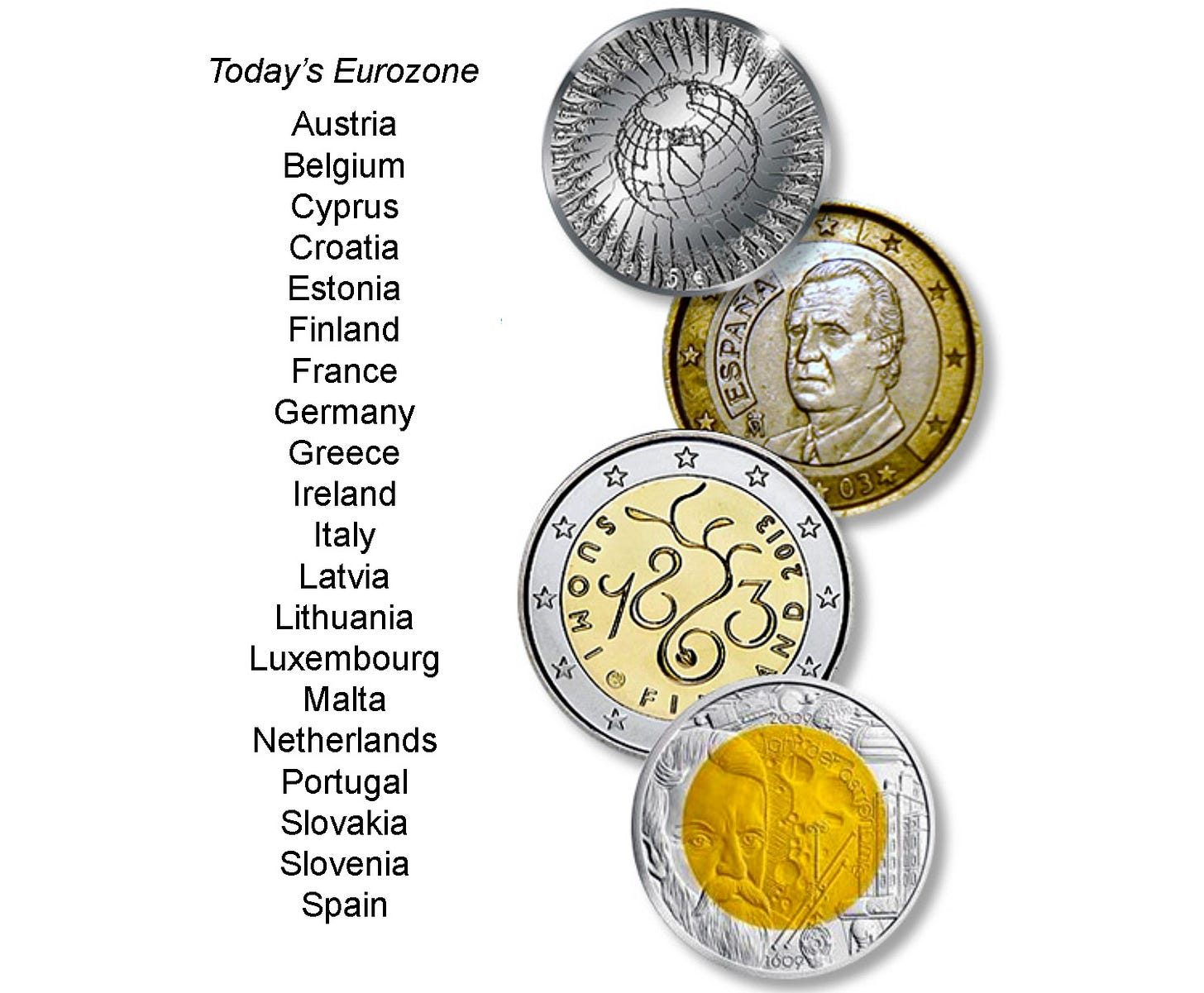A lady named Laura wrote to us and asked about her coin marked with a funny word: Lëtzebuerg. I didn’t recognize it either, but a quick search found that Lëtzebuerg is Luxembourg, a country in Europe, and Laura had a 1 euro cent coin from Luxembourg. Very nice!
There are eight denominations in eurozone coinage, ranging from one cent to two euros. They have a common reverse, portraying a map of Europe, but each of the (currently) 20 countries has its own design for the obverse. Therefore, each euro denomination has a variety of designs circulating at once. This may be confusing to normal people, but coin collectors are happy with the many different designs. Here’s a run-down of the eight denominations for The Netherlands, dated 2012.
The metallic composition of these coins mimics gold, silver, and copper, but, of course, none of these metals are actually used because this is fiat money. That is, euro coinage has value only because the government says it does (i.e., by fiat), not because it is actually worth anything!
According to Wikipedia, the "gold" is an alloy of 75% copper, 20% zinc and 5% nickel, the "silver" is cupronickel, 75% copper and 25% nickel. The 10c, 20c and 50c coins are made of an alloy known as "Nordic Gold", consisting of 89% copper, 5% aluminium, 5% zinc and 1% tin. The euro denominations (not the cents) are bi-metallic coins.
Euro coins, and various commemorative coins, are minted at national mints across the European Union. Obverse designs are chosen nationally, while the reverse and the currency as a whole is managed by the European Central Bank (ECB).
With all the countries using the euro, collectors can have a field day with all the available designs. Below is a cool graphic from tripod.com which gives you an idea of the design starting point.
This is only a starting point. The designs above cover circulating coinage. There are many unique and beautiful designs for non-circulating commemorative coins. Here are a few commems I find attractive. What about you?
As with all modern coinage, there are so many varieties that a simple web page cannot provide comprehensive coverage of the topic. In the old days, a single coin design would be used for decades. Now, with modern minting technology, new coin designs appear in months, not decades. A good coin catalog is essential for modern coin collecting. A favorite for euro coinage is Standard Catalog of World Coins 2001 to Date.
If you head over to CoinQuest, you will find our page with collecting concepts and costs. Euro coinage is both beautiful and affordable, and here are some general rules to keep in mind:
1. Circulated euro coins, from one cent to 2 euros, are worth face value and can be purchased for small amounts over face value, the additional charge covers handling by the coin dealer. To convert euro value to any other currency, use xe.com. Right now one euro is equivalent to $1.07 US dollars. Check the price often, as it changes every day. Assembling a complete set of all circulating euros, from all dates, all countries, and all denominations is a formidable collecting challenge but very affordable. It is a great place to start your coin collecting hobby.
2. Uncirculated euro coins, from one cent to 2 euros, are coins that have been rescued from circulation before entering it. These are especially beautiful and usually carry a premium of a few US dollars over face value. Check eBay and similar sites and you will find oodles of nice coins at nice prices.
3. Proof euro coins, from one cent to 2 euros, are coins that have been made especially for collectors. They have special surface finishes and can look very, very beautiful. Proofs usually sell for a few tens of dollars over face.
4. Commemorative euro coins have denominations larger than 2 euros. These come in all sorts of amazing patterns and compositions, including gold, silver, and exotic metals. They can sell for tens to hundreds of US dollars.






